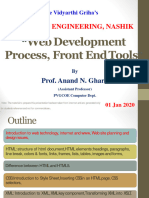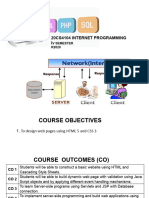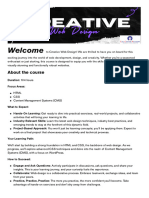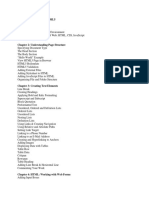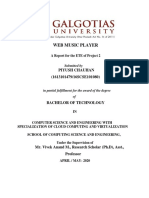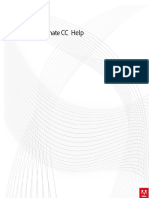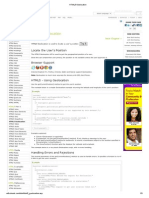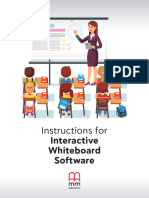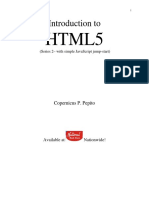0% found this document useful (0 votes)
53 views20 pagesWeb Basics and Design Principles
The document provides an overview of web basics and design principles, including the structure and function of the web, protocols, web servers, and essential web development tools. It covers HTML and CSS fundamentals, including their syntax, elements, and styling techniques, as well as the introduction of HTML5 and CSS3 features. Additionally, it emphasizes user-centric design principles and the importance of planning and navigation in web design.
Uploaded by
Rani ShahCopyright
© © All Rights Reserved
We take content rights seriously. If you suspect this is your content, claim it here.
Available Formats
Download as PDF, TXT or read online on Scribd
0% found this document useful (0 votes)
53 views20 pagesWeb Basics and Design Principles
The document provides an overview of web basics and design principles, including the structure and function of the web, protocols, web servers, and essential web development tools. It covers HTML and CSS fundamentals, including their syntax, elements, and styling techniques, as well as the introduction of HTML5 and CSS3 features. Additionally, it emphasizes user-centric design principles and the importance of planning and navigation in web design.
Uploaded by
Rani ShahCopyright
© © All Rights Reserved
We take content rights seriously. If you suspect this is your content, claim it here.
Available Formats
Download as PDF, TXT or read online on Scribd
/ 20









